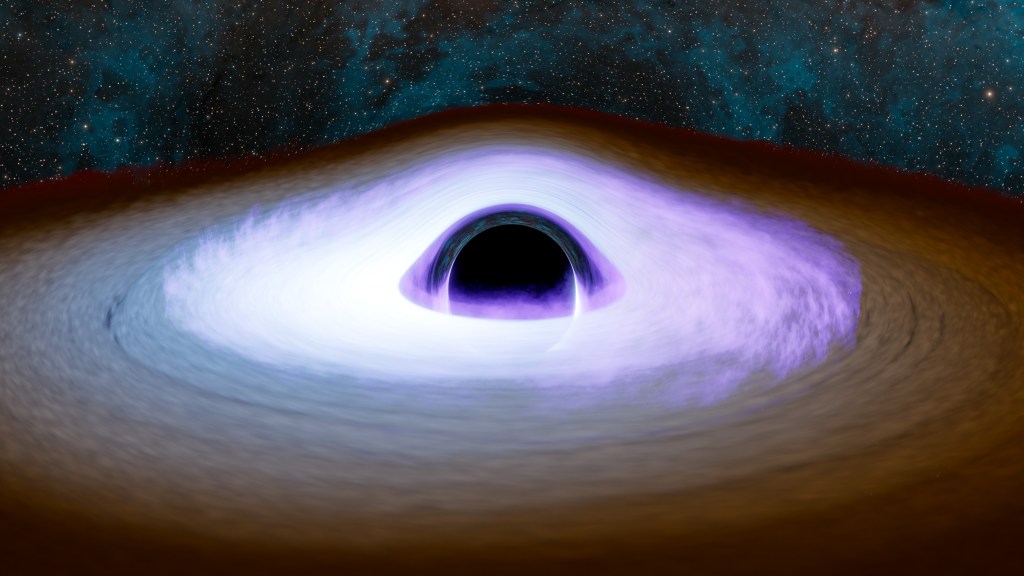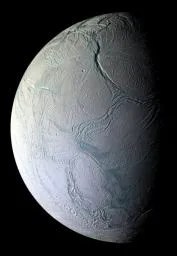Cassini is orbiting Saturn with a period of 31.9 days in a plane inclined 36 degrees from the planet's equatorial plane. The most recent spacecraft tracking and telemetry data were obtained on May 10, using one of the 34-meter diameter Deep Space Network stations in Australia. The spacecraft continues to be in an excellent state of health with all of its subsystems operating normally except for the instrument issues described at
http://saturn.jpl.nasa.gov/anomalies
.
This week's highlight was Cassini's T-119 close encounter with Saturn's largest moon Titan. During the encounter, Cassini carried out some important direct-sensing observations. For one, the Ion and Neutral Mass Spectrometer (INMS) sampled Titan's atmosphere; for another, Cassini's three radio-frequency beams actively probed both the atmosphere and the surface of the planet-like moon. The T-119 atmosphere occultation experiment was the final one in the mission. Details published here include videos that illustrate both of the Radio Science experiments accomplished during the encounter:
.
Wednesday, May 4 (DOY 125)
Cassini performed Orbit Trim Maneuver (OTM)-448 on its backup opportunity today. Deliberately delaying the maneuver realized some inherent engineering benefits. The 11.3-second burn of the small hydrazine-fed thrusters changed the spacecraft's velocity by 17 millimeters per second, making a fine course adjustment on approach to Titan.
Cassini completed the inbound leg of its Saturn orbit #235, passing through periapsis at an altitude of about 442,000 kilometers above Saturn's visible limb, around 35 degrees southern latitude. It reached a speed of 41,811 km per hour relative to the planet.
Taking advantage of its proximity to the gas giant, Cassini's Visible and Infrared Mapping Spectrometer (VIMS) spent one hour mapping Saturn's south polar region. Next, the Ultraviolet Imaging Spectrograph (UVIS) took control of spacecraft pointing for five hours, while it led VIMS, the Composite Infrared Spectrometer (CIRS), and the Imaging Science Subsystem (ISS) in an examination of Saturn's southern aurora. This observation was repeated on the following day for a little under four hours.
Thursday, May 5 (DOY 126)
While Cassini proceeded swiftly outbound from Saturn, ISS controlled pointing for two hours, mapping Saturn's thin bright limb. CIRS, VIMS, and UVIS rode along.
shows the stunning viewing geometry.
Late in the day, Saturn's largest moon Titan became the target of observations for the upcoming encounter. CIRS and VIMS started off with a nearly seven-hour observation of the giant moon's visible southern hemisphere, making measurements of temperatures and inferences of winds. During this observation, the planet-like object loomed closer to Cassini than our own Moon is to Earth.
Friday, May 6 (DOY 127)
ISS spent two hours imaging Titan's surface and atmosphere at low southern latitudes, while CIRS, VIMS, and UVIS rode along. Next came a long, fast "train" of Titan observations during the close T-119 encounter. This included the Radio Science atmospheric occultation and bistatic surface experiment mentioned above. Of note, INMS was given priority to make direct atmospheric measurements at closest approach. This was a critical flyby for INMS, as T-119 was in the midnight local time for Cassini relative to Titan, and midnight local time for Titan relative to Saturn. This is the only time in the mission that INMS had the chance to measure Titan’s atmosphere in this geometry. What's special is that Titan's night-side atmosphere was receiving the smallest possible influx of external energy. The encounter with massive Titan increased Cassini's orbital inclination from 28.8 to 36.0 degrees as planned, while the period remained unchanged at 31.9 days.
Saturday, May 7 (DOY 128)
Following playback of data recorded during the encounter, ISS monitored Titan for four hours today, with VIMS riding along, to track clouds and their evolution.
Sunday, May 8 (DOY 129)
ISS and VIMS spent six more hours watching Titan for clouds. Next, ISS led the other instruments, CIRS, VIMS, and UVIS, as they observed Saturn's shadow on the very distant Phoebe ring for 14.5 hours. This sparse, dusty ring orbits Saturn along the highly inclined orbit of Saturn's retrograde moon Phoebe, which reaches 15 million km from the planet -- more than a dozen times the distance to Titan's orbit.
Monday, May 9 (DOY 130)
Realtime commands had Cassini carry out a 3.2-second burn of its bi-propellant-fed main engine. This Orbit Trim Maneuver (OTM)-449 provided a 550-millimeter-per-second change in velocity, to clean up small errors in the spacecraft's trajectory following T-119. Risk of bi-propellant depletion prior to the end of the mission is now less than 11 percent, and the mission can be completed using the hydrazine mono-propellant system if necessary.
With the OTM complete, ISS observed Saturn's narrow F ring for 15 hours to make a movie. CIRS and VIMS rode along.
Today marked the start of some science team meetings that would last between one and three days. The CIRS team met in Paris France, and VIMS met in New York. The Magnetospheric Imaging Instrument (MIMI) team met in Maryland, and Radio and Plasma Wave Science (RPWS) in Michigan.
Tuesday, May 10 (DOY 131)
ISS began a 37-hour observation of Saturn's irregular moon, Skathi. This object is about 6 km in diameter, and has a very dark surface. Its inclined, retrograde orbit takes it as far as 19.7 million km from the planet once every 728 days. Also known as Skadi, the name comes from Norse mythology.
The Deep Space Network communicated with and tracked Cassini nine times this week, using stations in Australia. A total of 154 individual commands were uplinked, and about 1,148 megabytes of telemetry data were downlinked and captured at rates as high as 142,201 bits per second.
Cassini's path (dark green arc) up to May 10; looking down from the north, all depicted objects (except the stars of course) revolve counter-clockwise, including Saturn along its orange-colored orbit of the Sun.






































